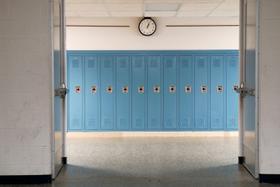Top Rankings
Harmony Emge SD 175 School District ranks among the top 20% of public school district in Illinois for:
Category
Attribute
Diversity
Most diverse schools (Top 1%)
For the 2025 school year, there are 2 public elementary schools serving 546 students in Harmony Emge SD 175 School District. This district's average elementary testing ranking is 3/10, which is in the bottom 50% of public elementary schools in Illinois.
Public Elementary Schools in Harmony Emge SD 175 School District have an average math proficiency score of 15% (versus the Illinois public elementary school average of 26%), and reading proficiency score of 21% (versus the 30% statewide average).
Minority enrollment is 66% of the student body (majority Black), which is more than the Illinois public elementary school average of 56% (majority Hispanic).
Overview
This School District
This State (IL)
# Schools
3 Schools
3,104 Schools
# Students
695 Students
1,223,910 Students
# Teachers
42 Teachers
89,922 Teachers
Student : Teacher Ratio
17:1
17:1
Student By Grade
District Rank
Harmony Emge SD 175 School District, which is ranked within the bottom 50% of all 844 school districts in Illinois (based off of combined math and reading proficiency testing data) for the 2020-2021 school year.
Overall District Rank
#614 out of 852 school districts
(Bottom 50%)
(Bottom 50%)
Math Test Scores (% Proficient)
(20-21)12%
28%
Reading/Language Arts Test Scores (% Proficient)
25%
30%
Science Test Scores (% Proficient)
40-44%
50%
Students by Ethnicity:
Diversity Score
0.66
0.71
% American Indian
n/a
1%
% Asian
n/a
6%
% Hispanic
4%
27%
% Black
47%
17%
% White
34%
44%
% Hawaiian
n/a
n/a
% Two or more races
15%
5%
All Ethnic Groups
District Revenue and Spending
The revenue/student of $22,522 is higher than the state median of $21,990. The school district revenue/student has grown by 12% over four school years.
The school district's spending/student of $19,279 is less than the state median of $21,244. The school district spending/student has grown by 12% over four school years.
Total Revenue
$16 MM
$41,381 MM
Spending
$13 MM
$39,976 MM
Revenue / Student
$22,522
$21,990
Spending / Student
$19,279
$21,244
Best Harmony Emge SD 175 School District Public Elementary Schools (2025)
School
(Math and Reading Proficiency)
(Math and Reading Proficiency)
Location
Grades
Students
Rank: #11.
Ellis Elementary School
Rank:
6/
Top 50%10
250 Illini Dr
Belleville, IL 62223
(618) 538-6114
Belleville, IL 62223
(618) 538-6114
Grades: PK-3
| 341 students
Rank: #22.
Harmony Intermediate Center
Rank:
4/
Bottom 50%10
7401 Westchester Dr
Belleville, IL 62223
(618) 397-3747
Belleville, IL 62223
(618) 397-3747
Grades: 4-6
| 205 students
Recent Articles

What is Project-Based Learning?
Project-based learning has been highly touted by some educators as a viable option to traditional learning models. We’ll take a look at what project-based learning is and why it is getting so much attention today.

What is an Online High School
Find information about Online High Schools - what they are and how they work.

“Smart Snacks” Standards Coming to School Vending Machines Nationwide
We explore new federal regulations that will ban junk food from public schools. This means no more sweets and soda in cafeteria lines, vending machines and snacks sold in other locations around the schools.





